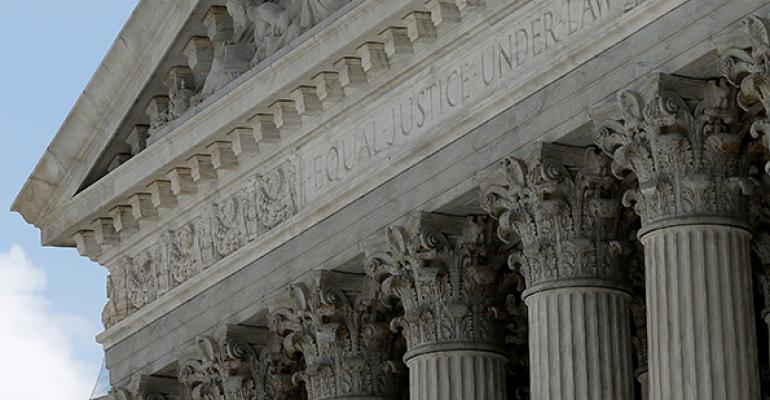The Supreme Court ruled this June, in Clark v. Rameker, that inherited IRAs aren’t considered protected retirement funds. Meaning, if your clients’ beneficiary files for bankruptcy, any IRAs they’ve inherited will be subject to their creditors’ claims.
In the case, Heidi Heffron-Clark argued that a $400,000 IRA she inherited from her mother in 2001 qualified as a protected retirement account. As such, she contended, the account was exempt from the claims of creditors after Clark and her husband filed for bankruptcy in 2010.
However, under U.S. tax code regarding inherited IRAs, Clark was required to withdraw a minimum amount of money from the account each year, even though she isn’t yet retirement age. Additionally, the bankruptcy trustee argued, there was nothing stopping Clark from cashing out the IRA and using it for any non-retirement purpose she might choose.
Given these facts, the court decided the account was not a protected retirement fund because the beneficiary wasn’t required to use it as one, and as such, the funds were fully available to Clark’s creditors.
The value of a trust
The lesson for estate planners and financial advisors, then, is to make sure clients’ assets are preserved in a Standalone Retirement Trust (SRT). Had Clark’s inherited IRA been received through a carefully designed trust, she wouldn’t have lost more than $300,000-worth of her inheritance, and her mother’s goal of passing her wealth on to her children would have been achieved.
With an SRT, inherited funds flow into a third-party trust on the death of the retirement plan participant. Beneficiaries still have access to the funds, but because they don’t establish the trust, don’t fund the trust with their own money and can’t modify the trust, the trust will—in most jurisdictions—enjoy substantial protection from the claims of the beneficiary’s creditors. An independent trustee—who isn’t the beneficiary—can also be appointed to oversee the trust’s distributions in order to ensure further protection from creditors’ claims.
In a handful of states, the need for an SRT won’t seem as significant because these states have enacted laws that protect inherited retirement accounts from creditors. However, SRTs should still be used in these states because beneficiaries could eventually move to a different state and lose that asset protection.
The advisor benefit
For advisors, Clark v. Rameker introduces a great opportunity to open the estate planning discussion with both new and existing clients. An SRT is an applicable solution for just about any client, regardless of net worth, because most people have retirement funds they’d like to pass on to loved ones. For any fund that’s six figures or more, an SRT should at least be considered.
Additionally, when clients choose to establish an SRT with you, there’s a much lower likelihood that the trust will be moved to another financial advisor in the future, helping you retain more assets under management.
Most importantly, though, broaching the subject of an SRT with your clients will help ensure that their estate plans are fulfilled exactly as they’d like them to be. With a trust in place, they’ll have peace of mind that their assets will go to loved ones—not creditors.
Matthew T. McClintock, J.D., is vice president of educational content with WealthCounsel.






